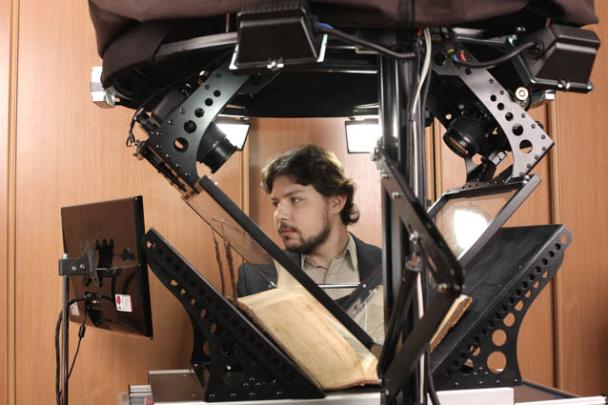
Aims and objectives
In the second half of the 17th century, Patriarch Nikon reformed church ceremonies and text books. The purpose of the reform was the convergence of Russian, Greek, Belorussian and Ukrainian cultures. In reality it led to a rupture with the Old Russian traditions and Russian society was split into two camps: supporters of reforms – "niconiane" and its opponents – Old Believers. Old Believers were the largest oppositional movement until 1905. They were cruelly persecuted by the state and official Orthodox church and suffered from Stalin’s repressions. But in spite of all the persecutions, Old Believers not only preserved Russian culture, but also developed it, adapting to new living conditions.
The Russian traditional writing kept by Old Believers was formed over many centuries, based on the Byzantine books that had appeared in Russia with Christianity. Russian scribes added to Byzantine book tradition their unique style of compositions and a range of thematic collections, created on a basis of both canonical, and apocryphal Christian books. During the dispute with official Orthodox church and in the religious trend, Old Believers had reinterpreted many compositions of early Christian writers. As a result a huge layer of original literature was created.
From the end of the 17th century the Ural region of Russia became a place of residence of Old Believers who had fled from the persecutions of the authorities in the central areas of the country. From 1974 to 2002 a group of workers from the Department of History (Ural State University) organised archaeographical expeditions to settlements from the Volga region to Western Siberia.
During these expeditions, 6,000 treasures of traditional writing were collected, dating from the 15th to the 20th centuries. The material includes didactic collections and prayer books, original polemics and eschatological compositions of Old Believers, samples of late Russian annals, monuments of historical-demographic and natural-scientific character, manuscript scores which have reflected the original old Russian ways of recording musical texts.
Apart from the monuments of literature, the collection includes archival documents: materials of local Old Believer councils, correspondence of outstanding figures of the Old Believer movement of the 20th century, and photographs of the late 19th to early 20th centuries.
The collection is now housed in the Laboratory of Studies in Archaeography of the Institute for Humanities and Art (Ural Federal University). However, there are no funds for the preservation and restoration of this collection of book treasures. The books, dating back 500 years, arrived at the archive of the Laboratory from the existing environment in very poor condition: polluted, damaged by fungus, with paper collapsing from oxidation. 90% of the collection needs conservation and restoration measures. Due to the absence of funding many treasures of writing of great cultural and scientific value could be lost. There is increased acidity and dryness of paper and many of the books are suffering from a process of cementation and crumbling colours of miniatures. A steady and almost irreversible process of collection destruction is taking place. Researchers’ access to this collection has had to be considerably limited.
This project aims to rescue the most valuable books collected by the Ural Archaeographical expedition. Acid-free cardboard boxes will be purchased to store approximately 4,000 items, and the most valuable and interesting books will be digitised (approximately 20,000 pages) and made available on a website. A seminar to publicise the results of the project will be held, for other holders of old books in the Ural region.
Outcomes
An inventory was created of 1,975 old printed books and 3,876 manuscripts. 35 books were digitised dating from the 16th-19th century, resulting in 20,026 digital images. The digital copies have been made available online through the website of the Laboratory of Studies in Archaeography of the Institute for Humanities and Arts of Ural Federal University. More than 4,000 boxes of acid-free cardboard were produced, for the storage of the old books and manuscripts.
The records copied by this project have been catalogued as:
- EAP556/1 Laboratory of Studies in Archaeography Collection of Manuscripts and Old-Printed books [16th-20th centuries]
Due to the cyber-attack on the British Library in October 2023, the archives and manuscripts database is currently inaccessible and we are unable to provide links to the catalogue records for this project.
Blog: Book heritage of Ural Old Believers – June 2014



